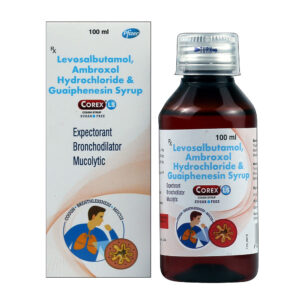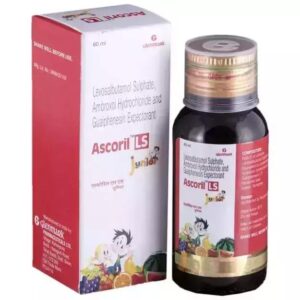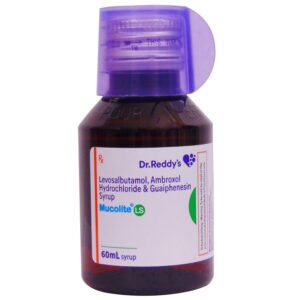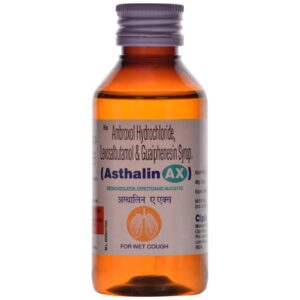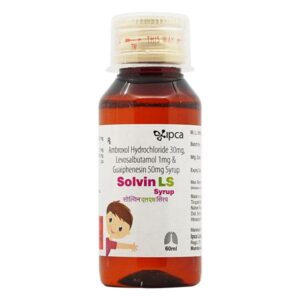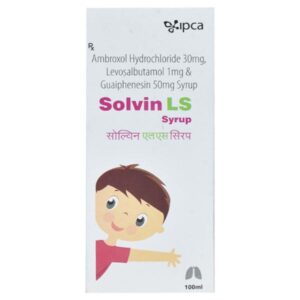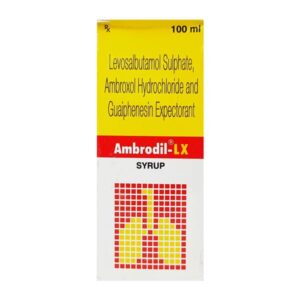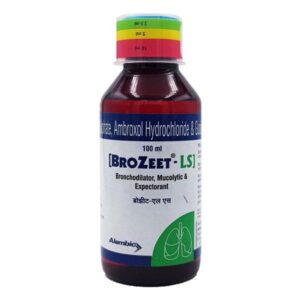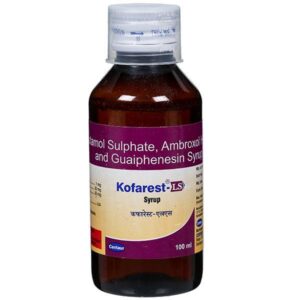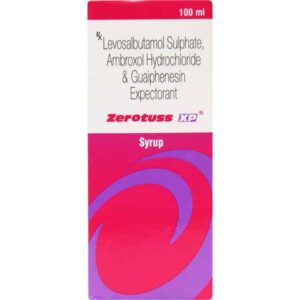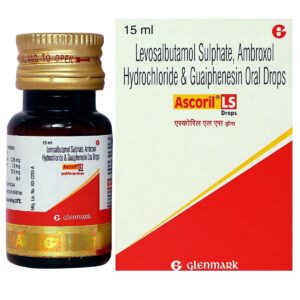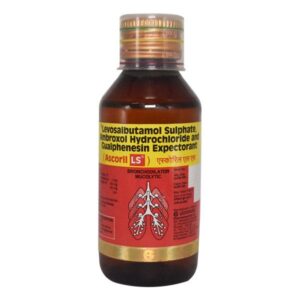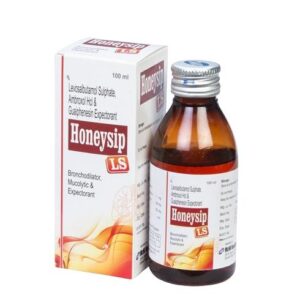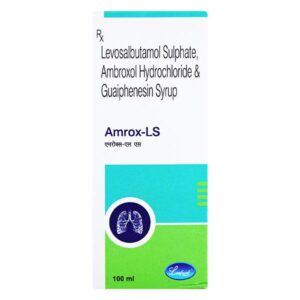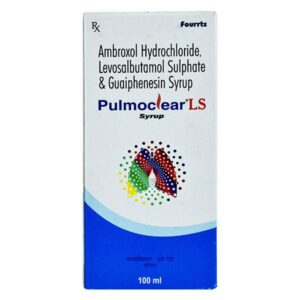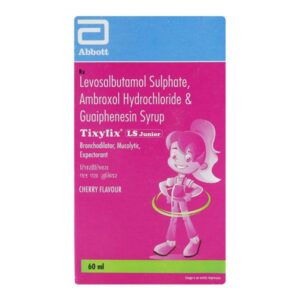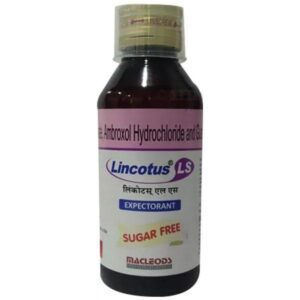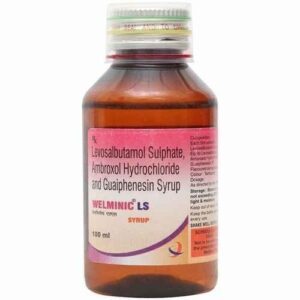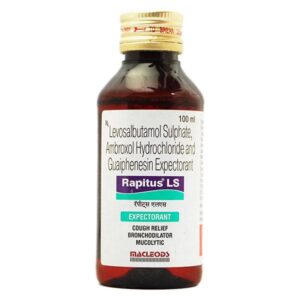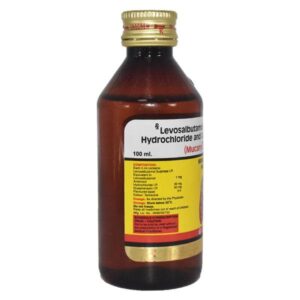AMBROXOL + GUAIPHENESIN + LEVOSALBUTAMOL
Ambroxol: Ambroxol is a medication used in the treatment of respiratory conditions, particularly those involving excessive mucus production and congestion. It is commonly prescribed for conditions such as chronic bronchitis, bronchiectasis, and asthma, where there is an accumulation of mucus in the airways.
The mechanism of action of Ambroxol involves the stimulation of the production and secretion of pulmonary surfactant, a substance that helps to keep the airways moist and prevents them from collapsing. Ambroxol also promotes the clearance of mucus by increasing the activity of cilia, tiny hair-like structures in the respiratory tract that help to move mucus out of the lungs.
Ambroxol is usually taken orally in the form of tablets or syrup. The usual recommended dose for adults is 30 mg three times a day. However, the dosage may vary depending on the severity of the condition and the individual’s response to treatment. It is important to follow the instructions provided by the healthcare professional or as mentioned on the product label.
Common side effects of Ambroxol include gastrointestinal discomfort, such as stomach pain, nausea, and vomiting. These side effects are usually mild and transient. Rarely, allergic reactions may occur, presenting as skin rashes or itching. If any severe or persistent side effects are experienced, it is advisable to consult a healthcare professional.
It is worth noting that Ambroxol should be used with caution in individuals with a history of gastric ulcers or gastrointestinal bleeding. As with any medication, it is essential to inform your healthcare professional about any existing medical conditions, ongoing treatments, or allergies before starting Ambroxol.
Guaiphenesin: Guaifenesin is a medication primarily used to treat and relieve symptoms of respiratory conditions such as coughs and congestion associated with the common cold, flu, and bronchitis. It is an expectorant that helps to loosen and thin mucus in the airways, making it easier to cough up and clear the respiratory passages.
The exact mechanism of action of guaifenesin is not fully understood. It is believed to work by increasing the hydration of the mucus, reducing its viscosity, and stimulating the activity of the cilia in the respiratory tract. By doing so, guaifenesin helps to facilitate the removal of mucus and improve respiratory function.
Guaifenesin is available in various forms such as tablets, capsules, and syrups. The recommended dose varies depending on the specific formulation and the age of the patient. It is typically taken orally every 4 to 6 hours, with or without food, following the instructions provided by the healthcare professional or the package insert.
Common side effects of guaifenesin include nausea, dizziness, headache, stomach upset, and rash. These side effects are usually mild and may resolve on their own. However, if they persist or worsen, it is advisable to consult a healthcare professional. Rare but serious side effects may include allergic reactions such as itching, swelling, severe dizziness, and difficulty breathing. If any of these occurs, immediate medical attention should be sought.
It is important to note that guaifenesin may interact with other medications, so it is essential to inform the prescribing healthcare professional about all current medications, including over-the-counter drugs and herbal supplements, to minimize the risk of potential interactions. Additionally, guaifenesin should be used cautiously in patients with certain medical conditions such as kidney disease or asthma, and it may not be suitable for everyone. Consulting a healthcare professional is recommended before starting or altering the dose of guaifenesin.
Levosalbutamol: Levosalbutamol, also known as levalbuterol, is a selective beta-2 adrenergic receptor agonist drug. It is commonly used in the management of various respiratory conditions such as asthma, chronic obstructive pulmonary disease (COPD), and other chronic bronchospastic disorders.
The primary mechanism of action of levosalbutamol is to stimulate beta-2 adrenergic receptors in the smooth muscles of the airways. This activation leads to the relaxation of bronchial smooth muscles, resulting in bronchodilation and improved airflow. Levosalbutamol has a higher specificity for beta-2 receptors compared to the racemic mixture of albuterol, which contains both R and S enantiomers. As a result, levosalbutamol provides a more targeted bronchodilating effect.
Levosalbutamol is available in various forms, including inhalers (metered-dose inhalers and dry powder inhalers) and nebulizer solutions. The appropriate dose and frequency of administration will depend on the specific formulation, the severity of the respiratory condition, and the patient’s age.
Common side effects of levosalbutamol include:
1. Tremors: Some individuals may experience involuntary muscle tremors, particularly in the hands or fingers.
2. Headache: Levosalbutamol can occasionally cause headaches or migraines.
3. Nervousness: Some patients may feel increased restlessness or anxiety.
4. Increased heart rate: Tachycardia, or a rapid heartbeat, can occur as a side effect of levosalbutamol.
5. Palpitations: Some patients may feel an irregular or pounding sensation in the chest.
6. Hypokalemia: In rare cases, levosalbutamol may cause a decrease in potassium levels, which can lead to muscle weakness or cardiac arrhythmias.
It is important to note that while levosalbutamol is generally well-tolerated, patients may still experience allergic reactions or other severe side effects. It is important to seek immediate medical attention if any serious adverse reactions occur.
It is essential to consult with a healthcare provider before starting levosalbutamol or any other medication to ensure the appropriate dose, administration technique, and overall treatment plan for individual circumstances.

